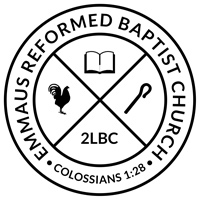Dec 12
3
Doctrinal Standard #40 & 41 (3 of 4 weeks)
- Q. What rules did God first reveal for man to obey?
- A. The rules He first revealed were the moral law.
- Q. Where is the moral law summarized?
- A. The moral law is summarized in the Ten Commandments.
Memory Verses
- “Through your precepts I get understanding; therefore I hate every false way” (Psalm 119:104, ESV).
Scripture
- Study Passage: Psalm 119
- Support Passages: Psalms 1, 19, 111, 112; Matthew 10:28
- Bible Story: Acts 5:12-42
Thoughts
- There are three common uses of God’s law. One of those is the normative use; this means that God’s law is used in the life of believers who have been saved by faith apart from the law. God’s law is good and righteous. It defines and points out sin that is not pleasing to God. It is one of the means by which the Holy Spirit convicts and guides believers into becoming more and more like Jesus Christ. Psalms 119 provides a beautiful description of God’s commands and how they play an important part in the life of those who love God. It is important that we remember that while we are saved by our faith in Jesus Christ alone God expects us to be holy as he is holy. Scripture calls this process sanctification.
- “The word sanctification (Gk. Hagiasmos) means ‘to set apart’. The same root word is found in the English words saint, holy, and holiness. Sanctification and its related terms are used in a variety of ways in both the Old Testament and New Testament. With respect to the New Testament believer, however, there are primarily three aspects of sanctification.
- (1) Positional sanctification. This is the believer’s position or standing before God, based on the death of Christ. In positional sanctification the believer is accounted holy before God; he is declared a saint. Paul frequently began his letters by addressing the believers as saints (Rom. 1:7). It is noteworthy that so carnal a group as the church at Corinth is addressed as ‘those who have been sanctified in Christ Jesus’ (1 Cor. 1:2). This positional sanctification is achieved through the once-for-all death of Christ (Heb. 10:10, 14, 29).
- (2) Experiential Sanctification. Although the believer’s positional sanctification is secure, his experiential sanctification may fluctuate because it relates to his daily life and experience. Paul’s prayer is that believers should be sanctified entirely in their experience (1 Thess. 5:23); Peter commands believers to be sanctified or holy (1 Peter 1:16). This experiential sanctification grows as the believer dedicates his life to God (Rom. 6:13; 12:1-2) and is nourished by the word of God (Ps. 119:9-16). Clearly, additional factors enter into experiential sanctification.
- (3) Ultimate Sanctification. This aspect of sanctification is future and anticipates the final transformation of the believer into the likeness of Christ. At that time all believers will be presented to the Lord without any blemish (Eph. 5:26-27)” (Pg. 329-330). [1]
Discussion Questions
- Read Psalm 119. How is God’s law described?
- Do you feel the same way about God’s law? Explain
- Why are we to obey God’s law?
- What are the things the Psalmist says he does with God’s law?
- Listed are some of the verbs the Psalmist wrote about God’s law: Learn, keep, seek, stored, delight, meditate. What do these mean and how do you apply them?

